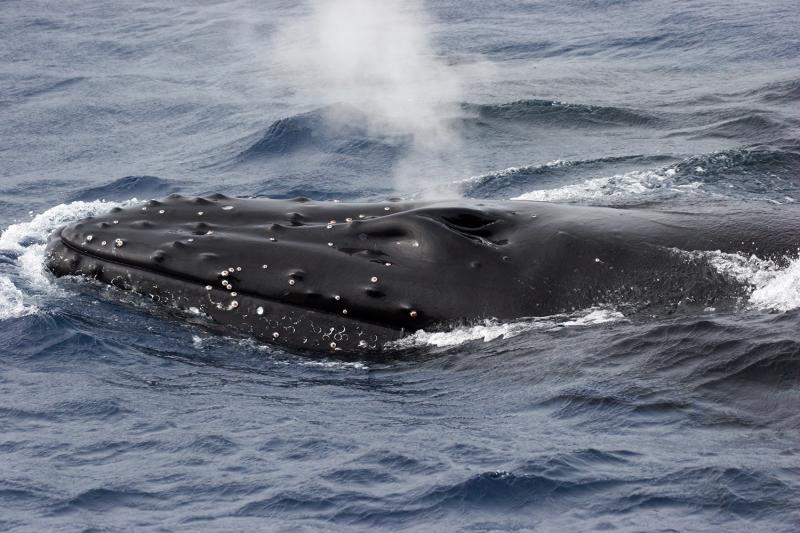Weather forecasts only look out a few days to weeks. Two new research studies describe the increasing accuracy of specialized scientific models in forecasting changes in the ocean up to a year in advance.
The models have increasing value as climate change drives shifts in ocean temperatures and other conditions with new and unexpected outcomes. The changes can have ecological and economic repercussions. For example, warming ocean temperatures increase the overlap between fishing fleets and protected species like whales and sea turtles, which can trigger fishing closures. The research was conducted by scientists at NOAA Fisheries and University of California, Santa Cruz.
NOAA Fisheries is also pursuing development of “Climate-Ready Fisheries” that adjust to changing conditions, even over the course of a single fishing season. Some forecasts examined in the new studies could provide insight as much as a year in advance. This could highlight potential conflicts or opportunities in time for managers and fishermen to do something about them. This kind of proactive management was highlighted in the recent National Climate Assessment as an important approach to addressing the impacts of climate change.
“We can now look months or even a year out and ask, what is that part of the ocean going to look like, and what does that mean for the species and for the people and industries who use it?” said Stephanie Brodie, lead author of one of the new studies. “For fisheries, it gives managers a chance to evaluate the trade-offs in reducing human-wildlife conflict and supporting an economically viable fishery.”
Anticipating Change
The forecasts focus on ocean changes that occur more slowly than the atmospheric changes forecast in weather reports, making it easier to predict conditions further in advance.
The first study, published in PLOS Climate, examined the accuracy of climate models in forecasting regional changes in the California Current Ecosystem. This region is one of the world’s most productive coastal ecosystems, supporting lucrative fisheries and tourist activities such as whale watching. Scientists focused global climate models through a process known as “downscaling” to zoom in on regional conditions in the California Current up to 1,000 kilometers off the Pacific Coast.
Researchers found that the models could produce accurate regional forecasts of many ocean conditions. They were especially good at predicting surface and bottom temperatures, sea surface heights, and stratification of temperatures in the upper ocean, often months in advance.
“The slow evolution of the ocean gives us an advantage relative to the weather forecasters,” said Michael Jacox, lead author of the study and coauthor of Brodie’s paper. “We also see predictable changes in the ocean associated with big climate events like El Niño and La Niña.”
Researchers also explored how their predictions might feed into regional management tools that link ecosystem changes with species shifts. These tools could inform decisions related to species distributions, such as minimizing collisions between ships and whales or entanglements of marine mammals and turtles in fishing gear. Turning these tools into forecasts up to a year in advance could warn ocean users of climate extremes such as marine heatwaves.
Applying Management Tools
The second study, led by Brodie and published in Nature Communications, examined how forecasts might work with two specific management tools. Researchers applied the forecast models to help avoid whale entanglements in the Dungeness crab fishery in California. The authors tested forecasts of the habitat compression index, a measure of how changing ocean conditions compress cool, productive waters along the West Coast.
That can lead whales that prefer those temperatures into the same narrow band of coastal waters in which the crab fishery operates. This happened during a large marine heatwave that enveloped the West Coast from 2014 to 2016. Whale entanglements spiked as humpback whales followed anchovies into the same waters where fishing vessels had positioned crab traps. The crab fishery is often closed or delayed to help prevent whale entanglements, and while this is effective for whales it does come at a large economic cost. Forecasts of these high entanglement conditions could provide stakeholders with the necessary foresight to anticipate these closures and delays.
Researchers applied global sea surface temperature forecasts to the habitat compression index. This provided at least a few weeks to a month-and-a-half advance notice of a “compression event,” that could affect species. The approach can provide up to 9 months advance notice in February and March, when conditions are more predictable. The researchers found that the forecasts could have predicted the habitat compression driven by the 2014–2016 marine heatwave as much 12 months in advance.
They also examined how forecasts might help a tool called Temperature Observations to Avoid Loggerheads. The tool uses sea surface temperatures to anticipate the presence of endangered loggerhead turtles. It informs managers when drift gillnet fisheries, which sometimes entangle the turtles, could be closed. Brodie and her team found that the tool could provide as much as 12 months advance notice of the temperatures that would trigger the closures. That may be valuable in helping scientists develop monitoring programs for loggerhead turtles, the researchers noted.
In some cases global climate models produced more accurate forecasts than the higher resolution downscaled versions. This is because there are many more global forecasts, which enables them to better capture the range of possible outcomes. The researchers developed a practical guide to help others applying the tools decide whether the higher resolution downscaling is really necessary. The downscaling process requires a lot of effort and computational expense.
“The message to the managers wondering what climate change will bring is that we have the tools to help them answer that question,” Brodie said. “They can use the climate models to turn familiar management tools into forecasts that can give them important insight into what is coming. That puts them ahead of the game and helps build resiliency.”



